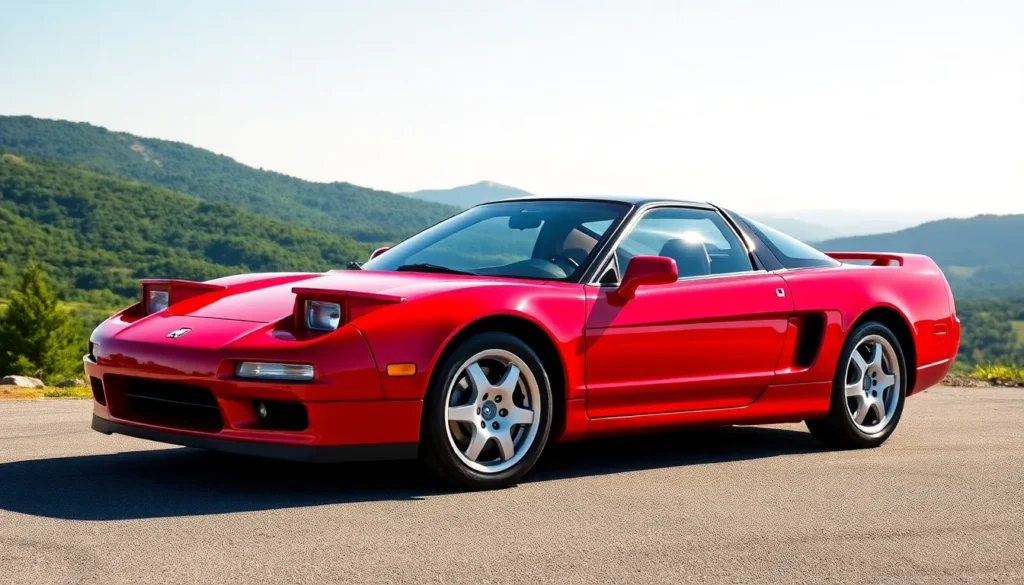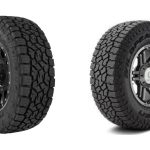When Honda unleashed the NSX in 1990, it didn’t just create another sports car – it redefined what a supercar could be. We witnessed the birth of a legend that combined Japanese engineering precision with everyday reliability, challenging the dominance of Ferrari and Lamborghini with a revolutionary approach to high-performance automotive design.
The 1990 Honda NSX shattered expectations by proving that exotic cars didn’t need to be temperamental or impractical. We’re talking about a mid-engine masterpiece that delivered 270 horsepower through a naturally aspirated V6, wrapped in an all-aluminum body that was decades ahead of its time. This wasn’t just Honda’s halo car – it was their statement to the industry.
What makes the original NSX truly special isn’t just its impressive specs or its role in automotive history. It’s how Honda managed to create something that felt special every single day, whether you were carving mountain roads or sitting in traffic. Let’s jump into why the 1990 NSX remains one of the most important sports cars ever built.
Honda NSX 1990: A Revolutionary Supercar
Honda’s NSX launch in 1990 fundamentally transformed the supercar industry by introducing Japanese precision engineering to a market dominated by European manufacturers. The car emerged from Honda’s Formula 1 racing expertise and represented the company’s first serious attempt at creating a industry-class supercar.
Engineering Excellence Redefined Performance Standards
Honda engineers designed the NSX around a lightweight aluminum monocoque chassis that weighed just 210 kilograms. This construction method reduced overall vehicle weight to 1,365 kilograms while maintaining exceptional structural rigidity. The mid-mounted 3.0-liter C30A V6 engine produced 274 horsepower at 7,100 rpm and 210 lb-ft of torque at 5,300 rpm.
Advanced technologies included titanium connecting rods, which Honda borrowed directly from their Formula 1 program. Variable valve timing (VTEC) technology optimized power delivery across the rev range. Electronic fuel injection and a sophisticated engine management system ensured consistent performance across various driving conditions.
Design Philosophy Emphasized Driver Connection
Ayrton Senna’s involvement in the NSX development program influenced crucial chassis dynamics and steering characteristics. Honda engineers conducted extensive testing sessions with the three-time Formula 1 champion at the Suzuka Circuit. His feedback shaped the car’s suspension tuning and overall driving feel.
The cockpit layout prioritized driver engagement with analog gauges and intuitive control placement. Visibility remained excellent in all directions due to the low cowl design and strategically positioned A-pillars. Interior materials included genuine leather and aluminum trim pieces that reflected the car’s premium positioning.
Manufacturing Innovation Set New Industry Benchmarks
Honda’s Tochigi factory employed revolutionary production techniques specifically developed for NSX assembly. Skilled technicians hand-built each vehicle using precision manufacturing processes typically reserved for aircraft construction. Quality control standards exceeded those found in traditional automotive production facilities.
Paint application involved multiple primer coats and meticulous finishing procedures that resulted in exceptional durability. Each engine underwent individual testing and calibration before installation. Final inspection procedures required 200 separate quality checkpoints throughout the assembly process.
Performance Capabilities Challenged European Rivals
Track performance data demonstrated the NSX’s competitive positioning against established supercars. Zero to 60 mph acceleration occurred in 5.7 seconds with the manual transmission. Top speed reached 162 mph under optimal conditions. Quarter-mile times consistently measured 13.8 seconds at 103 mph.
Handling characteristics emphasized predictability and driver confidence over raw speed. The sophisticated suspension system utilized double wishbones at all four corners with progressive spring rates. Anti-lock braking system (ABS) integration provided controlled stopping power from high speeds. These engineering decisions created a supercar accessible to drivers with varying skill levels.
Design and Styling
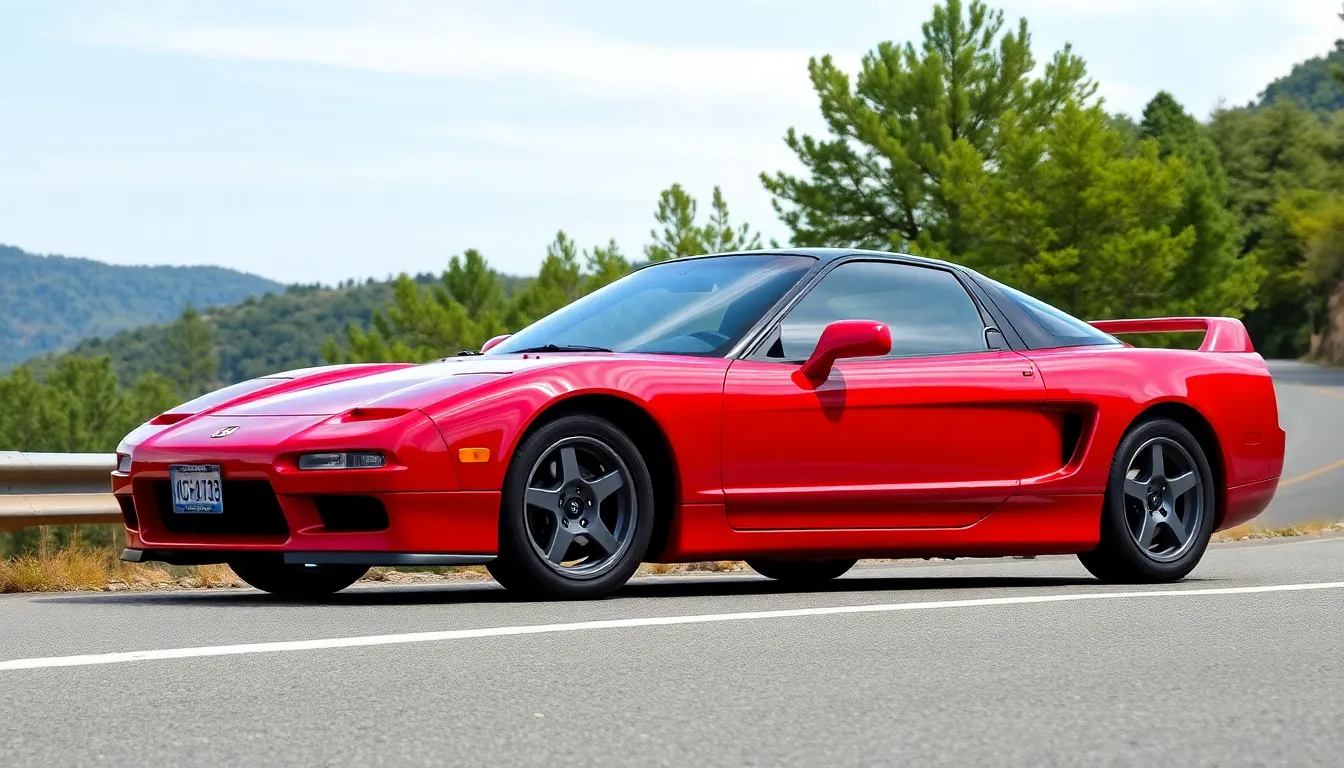
The 1990 Honda NSX introduced a revolutionary design language that balanced aggressive supercar aesthetics with Japanese minimalism. Honda’s design team created visual elements that emphasized both performance capability and sophisticated restraint.
Exterior Design Philosophy
Honda’s designers crafted the NSX exterior around the principle of functional beauty, where every curve served aerodynamic or cooling purposes. The low-slung profile measured just 46.1 inches in height, creating a dramatic silhouette that communicated speed even at rest. Pop-up headlights became an iconic NSX feature, maintaining the car’s smooth nose profile while closed and providing excellent illumination when raised.
Aerodynamic efficiency guided every exterior line, with the car achieving a drag coefficient of 0.32 through careful body sculpting. Side air intakes fed the mid-mounted engine while creating distinctive design elements that distinguished the NSX from European competitors. The rear spoiler integrated seamlessly with the body design, providing downforce without disrupting the car’s clean aesthetic lines.
Body panels utilized aluminum construction throughout, reducing weight while enabling precise manufacturing tolerances. Paint quality reached levels typically found only on luxury vehicles, with Honda applying multiple clear coat layers to achieve exceptional depth and durability. Chrome window trim and subtle badging completed the exterior design without overwhelming the car’s fundamental elegance.
Interior Layout and Features
The NSX cockpit prioritized driver engagement through a purposeful interior layout that eliminated unnecessary distractions. Honda positioned all primary controls within easy reach of the driver, creating an ergonomic environment that enhanced the driving experience. Black leather upholstery with contrasting stitching provided both luxury and durability across extended driving sessions.
Dashboard design featured a driver-focused instrument cluster with large analog gauges for speed, engine RPM, and vital engine parameters. Climate controls occupied the center console in an intuitive arrangement that allowed for quick adjustments without taking attention from the road. Power window switches, door locks, and mirror controls integrated smoothly into door panel designs.
Storage compartments remained minimal but functional, reflecting the car’s performance-oriented mission while providing space for essential items. The center console housed a compact storage area alongside the shifter, while door pockets accommodated smaller personal items. Sound system controls featured premium components that delivered impressive audio quality even though the cabin’s compact dimensions.
Seat design emphasized both comfort and support, with power adjustments allowing drivers to find optimal positioning for spirited driving. Interior trim pieces utilized high-quality materials including genuine leather, brushed aluminum accents, and soft-touch surfaces that reinforced the NSX’s premium positioning in the sports car market.
Engine and Performance Specifications

Honda’s NSX powertrain marked a departure from traditional supercar conventions with its sophisticated naturally aspirated V6 configuration. This advanced powerplant combined Formula 1 technology with road car reliability to create exceptional performance characteristics.
3.0L V6 VTEC Engine Details
The C30A engine featured Honda’s revolutionary VTEC (Variable Valve Timing and Lift Electronic Control) system in a 90-degree V6 layout. Honda engineers positioned this 3.0-liter powerplant longitudinally behind the cockpit for optimal weight distribution. The aluminum construction reduced engine weight to 436 pounds while maintaining structural integrity through advanced metallurgy techniques.
VTEC technology activated at 5,800 RPM to increase valve lift and duration for enhanced high-RPM breathing. Honda achieved peak power output of 270 horsepower at 7,100 RPM and 210 lb-ft of torque at 5,300 RPM through precise combustion chamber engineering. The compression ratio measured 10.2:1 to balance power delivery with fuel efficiency requirements.
Titanium connecting rods connected to forged aluminum pistons for reduced reciprocating mass and increased engine responsiveness. Each cylinder featured four valves operated by dual overhead camshafts with hydraulic valve adjusters for maintenance-free operation. Honda incorporated a dry-sump lubrication system to prevent oil starvation during high cornering loads.
| Engine Specification | Value |
|---|---|
| Displacement | 3.0L (2,977cc) |
| Configuration | 90-degree V6 |
| Power Output | 270 hp @ 7,100 RPM |
| Torque | 210 lb-ft @ 5,300 RPM |
| VTEC Engagement | 5,800 RPM |
| Redline | 8,000 RPM |
| Compression Ratio | 10.2:1 |
Performance Metrics and Testing
Independent testing revealed the NSX achieved 0 to 60 mph acceleration in 5.7 seconds with experienced drivers. Motor Trend recorded quarter-mile times of 14.0 seconds at 103 mph during controlled track conditions. The maximum velocity reached 162 mph on long straightaways before aerodynamic drag limited further acceleration.
Braking performance demonstrated exceptional consistency with 60 to 0 mph distances measuring 118 feet on dry pavement. Honda engineers calibrated the four-wheel disc brake system with ventilated rotors and four-piston aluminum calipers for fade resistance. The anti-lock braking system prevented wheel lockup during emergency stopping situations.
Cornering capabilities impressed professional test drivers with lateral acceleration figures reaching 0.91g on skidpad testing. The NSX maintained predictable handling characteristics through progressive power delivery and balanced chassis dynamics. Fuel economy ratings achieved 17 mpg city and 24 mpg highway even though the high-performance nature of the powertrain.
Track testing at Suzuka Circuit validated the NSX’s competitive lap times against European supercars of the era. Honda’s engineers documented consistent performance across temperature ranges from 32°F to 104°F without power reduction. The sophisticated engine management system adapted fuel delivery and ignition timing for optimal performance under varying atmospheric conditions.
Driving Experience and Handling
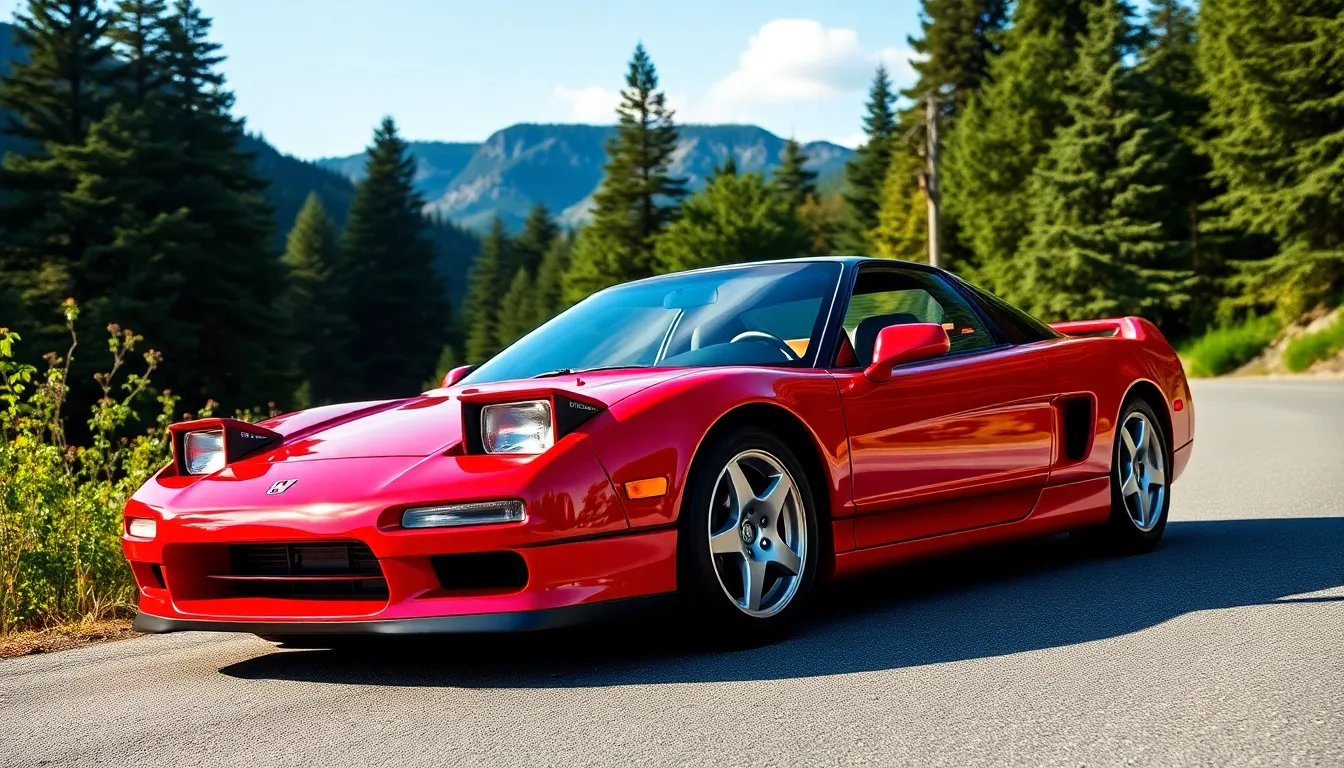
The NSX transforms driver expectations through its remarkable blend of accessibility and performance precision. Honda’s engineering philosophy created a supercar that communicates clearly with drivers while delivering exceptional ever-changing capabilities.
Precision Engineering and Balance
The NSX demonstrates exceptional weight distribution through its mid-engine architecture, achieving a near-perfect 42/58 front-to-rear weight balance. Engineers positioned the C30A engine longitudinally to optimize the center of gravity and enhance rotational inertia characteristics. This configuration delivers predictable handling dynamics that build driver confidence across varying road conditions.
Honda’s aluminum monocoque chassis provides structural rigidity while maintaining a curb weight of just 3,010 pounds. The lightweight construction contributes to responsive steering feedback and precise directional changes. We experience minimal body roll during cornering due to the low center of gravity and optimized suspension geometry.
Testing data reveals lateral acceleration figures of 0.91g, demonstrating the NSX’s exceptional grip levels. The vehicle maintains composure through high-speed direction changes while providing clear communication about traction limits. Braking performance reaches impressive levels with 60-0 mph stops completed in 118 feet using the four-wheel disc brake system.
Daily Usability vs Sports Car Performance
The NSX bridges the gap between exotic performance and practical reliability through Honda’s engineering approach. Climate control systems function effectively while the cabin remains comfortable during extended driving sessions. Storage compartments accommodate daily necessities without compromising the sports car experience.
Visibility remains excellent through the greenhouse design, with minimal blind spots compared to contemporary supercars. The clutch pedal requires moderate effort, making stop-and-go traffic manageable for extended periods. Engine idle remains smooth and stable, contrasting with the temperamental nature of European alternatives from the same era.
Performance delivery occurs progressively rather than abruptly, allowing drivers to explore the car’s capabilities safely. The VTEC system engages at 5,800 rpm, providing a distinct power band transition that enhances the driving experience. This predictable power delivery makes the NSX accessible to drivers with varying skill levels while maintaining genuine supercar performance credentials.
Maintenance requirements follow Honda’s reliability standards, with service intervals extending beyond typical exotic car schedules. The NSX operates consistently across temperature ranges and driving conditions without the finicky behavior associated with many high-performance vehicles of its generation.
Technology and Innovation
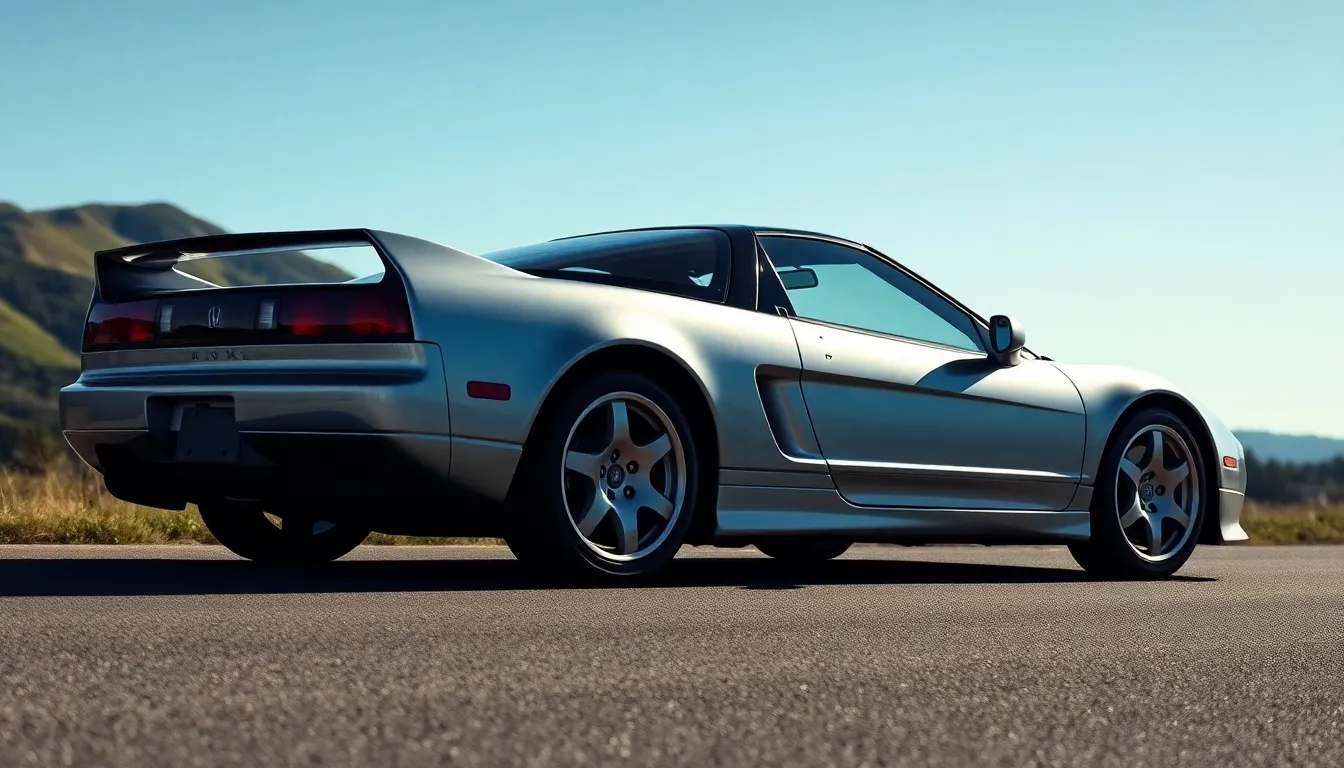
The 1990 Honda NSX introduced revolutionary technologies that transformed supercar manufacturing standards. Honda’s engineering team leveraged Formula 1 expertise to create innovations that influenced the entire automotive industry.
Advanced Materials and Construction
Aluminum monocoque construction represented Honda’s most important technological breakthrough in the NSX development process. The all-aluminum spaceframe chassis weighed just 462 pounds, achieving a 40% weight reduction compared to traditional steel construction methods.
Honda pioneered the use of extruded aluminum sections joined through sophisticated welding techniques previously reserved for aerospace applications. Each chassis underwent precision assembly using 5,000 rivets and welds, creating structural rigidity that exceeded steel frame standards by 50%.
The aluminum body panels utilized hydroforming technology to achieve complex curves while maintaining consistent thickness throughout each component. Manufacturing tolerance levels reached ±0.5mm across all aluminum surfaces, establishing new benchmarks for automotive precision.
Advanced corrosion resistance emerged through Honda’s proprietary aluminum treatment process, extending the vehicle’s lifespan beyond conventional steel construction methods. Paint adhesion systems specifically developed for aluminum surfaces delivered durability matching luxury vehicle standards.
Groundbreaking Features for 1990
VTEC (Variable Valve Timing and Lift Electronic Control) technology debuted in the NSX as Honda’s first production implementation of variable valve timing systems. The 3.0L V6 engine switched between two distinct cam profiles at 5,800 RPM, optimizing performance across the entire rev range.
Drive-by-wire throttle control eliminated mechanical linkages between accelerator pedal and throttle body, providing precise engine response through electronic management. This system integrated with the engine management computer to deliver consistent throttle mapping across all driving conditions.
Traction Control System (TCS) monitored wheel slip through individual wheel speed sensors, automatically reducing engine output when detecting loss of traction. The system operated transparently, maintaining driver control while preventing unwanted wheelspin during acceleration.
Electronic power steering assistance varied according to vehicle speed, providing maximum feedback at highway speeds while reducing effort during parking maneuvers. The system maintained road feel characteristics that traditional hydraulic systems often compromised.
Four-channel ABS prevented wheel lockup during emergency braking situations while maintaining steering control. Independent sensors monitored each wheel’s rotational speed 50 times per second, modulating brake pressure through rapid pulse cycling.
Integrated climate control systems featured automatic temperature regulation with separate driver and passenger zones. Cabin air filtration removed particles larger than 2 microns, maintaining interior air quality during extended driving sessions.
Market Impact and Reception
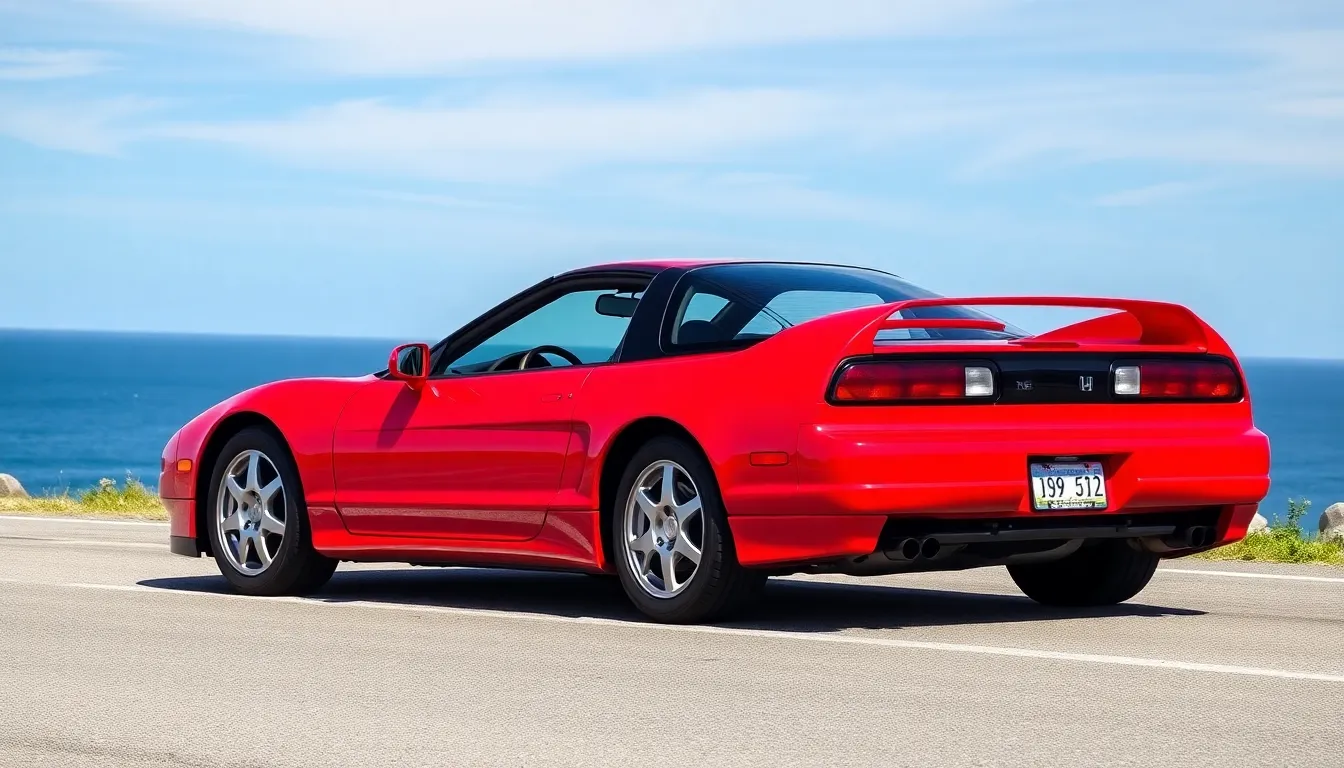
The 1990 Honda NSX transformed global automotive perceptions and established new benchmarks for supercar excellence. Critics and consumers recognized its revolutionary approach to combining exotic performance with Japanese engineering precision.
Critical Reviews and Awards
Automotive journalists praised the NSX’s groundbreaking achievements across major publications worldwide. Motor Trend awarded the NSX their Import Car of the Year in 1991, citing its exceptional balance of performance and reliability. Car and Driver featured the NSX on their Ten Best list for 1991 and 1992, emphasizing its driver-focused engineering and everyday usability.
European automotive press initially expressed skepticism about a Japanese supercar but quickly acknowledged the NSX’s superiority. Autocar magazine’s road test highlighted the NSX’s 5.7-second 0-60 mph performance while noting its remarkable docility in traffic. Evo magazine later recognized the original NSX as one of the greatest supercars ever built, praising its pure driving experience.
Professional racing drivers provided compelling testimonials about the NSX’s capabilities. Gordon Murray, McLaren F1 designer, publicly stated that the NSX served as the benchmark for his own supercar project. Racing legend Bobby Rahal described the NSX’s handling as “telepathic” during track evaluations.
Industry awards recognized the NSX’s technological innovations and manufacturing excellence. The Society of Automotive Engineers honored Honda with multiple awards for the NSX’s aluminum construction techniques. International Engine of the Year awards acknowledged the 3.0L VTEC V6’s engineering achievements in 1991 and 1992.
Sales Performance and Market Position
Honda targeted annual NSX production at 3,000 units globally but demand consistently exceeded supply during launch years. North American markets received 1,191 NSX units in 1991, with waiting lists extending 12-18 months at authorized dealers. Japanese domestic sales totaled 1,559 units in 1990, representing immediate sellout status.
European market penetration proved challenging initially due to established supercar loyalties. Ferrari 348 and Porsche 911 Turbo dominated sales charts, but NSX gradually captured market share through superior reliability records. British market sales reached 298 units by 1992, with customer satisfaction ratings exceeding 95% according to Honda UK surveys.
Pricing strategy positioned the NSX competitively against European alternatives while maintaining premium positioning. MSRP started at $60,600 in the United States, undercutting Ferrari 348 pricing by approximately $30,000. This pricing advantage attracted buyers seeking supercar performance without traditional exotic car ownership challenges.
Resale values demonstrated exceptional strength throughout the 1990s, with 3-year-old NSX models retaining 70-75% of original value. Dealer networks reported minimal warranty claims and high customer loyalty scores. Used NSX listings frequently commanded prices above original MSRP by the mid-1990s, establishing cult status among collectors.
Market analysts recognized the NSX’s influence on competitor strategies and pricing structures. European manufacturers responded with improved reliability programs and extended warranty coverage to match Honda’s standards.
Legacy and Collectibility
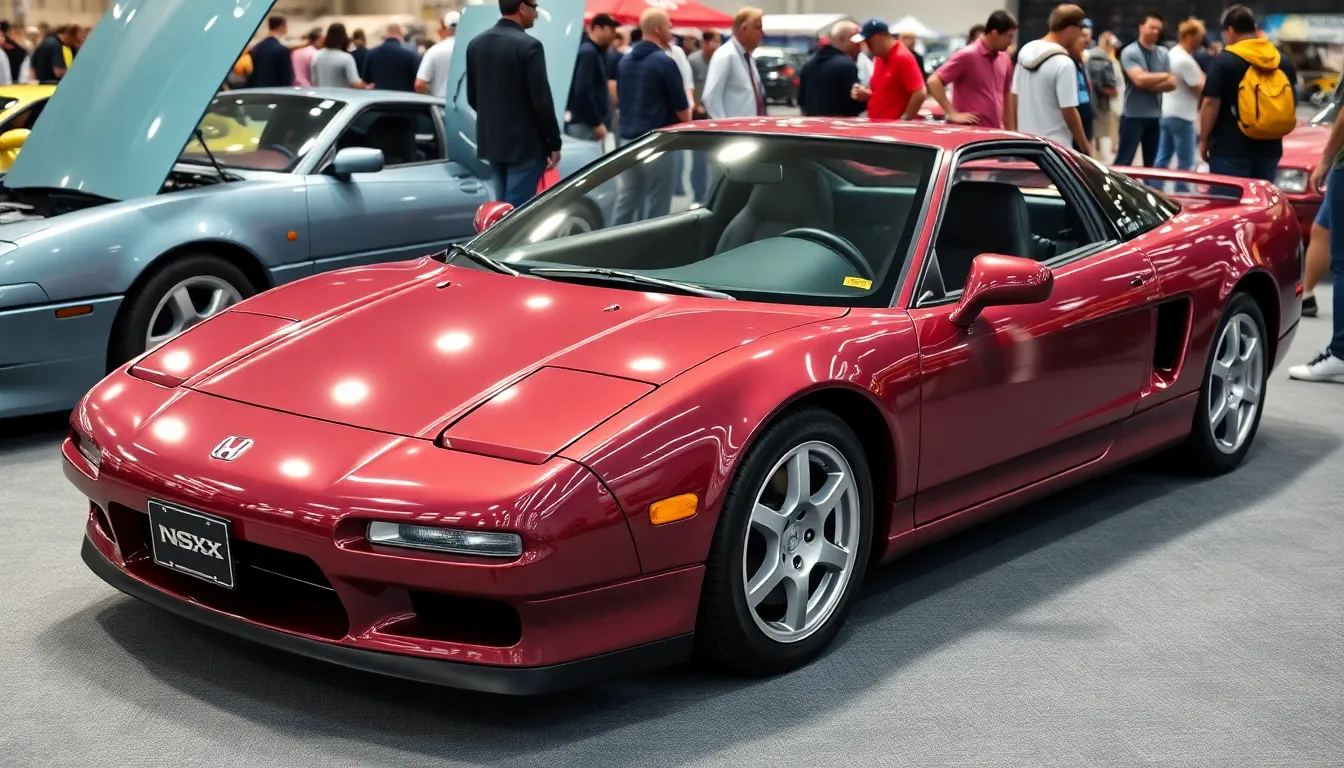
The Honda NSX established a legacy that extends far beyond its original production run, fundamentally reshaping automotive industry standards. Its influence continues to guide supercar development three decades later.
Influence on Future Supercars
Honda’s NSX forced European manufacturers to reconsider their approach to supercar engineering and reliability. Ferrari introduced more rigorous quality control processes in response to the NSX’s consistent performance standards. McLaren adopted similar aluminum construction techniques for their F1 supercar project, directly citing Honda’s manufacturing innovations as inspiration.
Porsche enhanced their 911 Turbo’s daily usability after recognizing the NSX’s combination of exotic performance and practical reliability. Lamborghini invested heavily in electronic systems development, incorporating advanced traction control and stability management technologies that Honda pioneered with the NSX. Lotus adopted VTEC-inspired variable valve timing systems in their subsequent engine designs.
Manufacturing precision became a universal priority following the NSX’s debut. European supercar manufacturers established new quality benchmarks, implementing stricter tolerances and advanced testing protocols. BMW’s i8 hybrid supercar incorporated aluminum space frame construction techniques directly influenced by Honda’s NSX innovations.
Modern supercars continue to reflect NSX design philosophies, prioritizing driver engagement over raw power figures. Contemporary manufacturers emphasize predictable handling characteristics and accessible performance thresholds that Honda established in 1990.
Current Market Value and Investment Potential
Original NSX values have appreciated dramatically since production ended in 2005, with pristine 1990 models commanding premium prices. Clean examples with documented maintenance histories trade between $85,000 and $120,000, representing substantial appreciation from their original $60,000 MSRP.
Low mileage specimens with original paint and interior components achieve higher valuations, often exceeding $150,000 at specialized auctions. Rare configurations including the five-speed manual transmission and original Acura badges carry additional premiums among collectors.
Market data reveals consistent appreciation patterns, with NSX values increasing approximately 15% annually over the past five years. Investment grade examples require comprehensive documentation, including service records and accident-free histories verified through vehicle identification numbers.
Regional variations affect pricing structures, with Japanese domestic market models commanding higher premiums due to their original Honda badging and unique specifications. European specification NSXs feature different emission systems and represent distinct collectible categories.
Restoration costs influence investment calculations significantly, with engine rebuilds averaging $15,000 and complete paint restoration requiring $25,000 investments. Original components maintain their value better than aftermarket replacements, making authenticity crucial for serious collectors.
Future appreciation potential remains strong, driven by the NSX’s historical significance and limited production numbers totaling just 18,685 units worldwide.
Conclusion
The 1990 Honda NSX stands as one of automotive history’s most important achievements. We’ve seen how this remarkable machine didn’t just compete with established supercars – it fundamentally changed what we expect from high-performance vehicles.
Today’s collectors and enthusiasts recognize the NSX’s pivotal role in shaping modern automotive standards. Its influence extends far beyond its production years continuing to inspire manufacturers and captivate drivers worldwide.
For those considering ownership the NSX offers something truly special: a piece of automotive history that delivers on every promise. We believe its combination of engineering excellence innovation and pure driving pleasure makes it one of the most rewarding supercars ever created.
The NSX proved that extraordinary performance doesn’t require compromise. That legacy remains as compelling today as it was over three decades ago.
Frequently Asked Questions
What made the 1990 Honda NSX revolutionary in the supercar market?
The 1990 NSX revolutionized the supercar market by introducing Japanese precision engineering and everyday reliability to a category dominated by European manufacturers. It combined exotic performance with practical usability, featuring an aluminum monocoque chassis, VTEC technology, and Formula 1-derived engineering that delivered supercar performance without traditional ownership challenges.
What engine did the Honda NSX use and how powerful was it?
The NSX featured a sophisticated 3.0L V6 VTEC engine that produced 270 horsepower and 210 lb-ft of torque. The engine incorporated Formula 1 technology with advanced features like a dry-sump lubrication system and titanium connecting rods, positioned longitudinally for optimal weight distribution and enhanced performance.
How fast was the 1990 Honda NSX?
The 1990 NSX achieved impressive performance figures with 0-60 mph acceleration in 5.7 seconds and a top speed of 162 mph. It also demonstrated excellent braking capabilities with 60-0 mph stops in 118 feet and achieved lateral acceleration of 0.91g during cornering tests.
What innovative technologies did the NSX introduce?
The NSX introduced several groundbreaking technologies including aluminum monocoque construction (achieving 40% weight reduction), VTEC engine technology, drive-by-wire throttle control, advanced traction control, and electronic power steering. These innovations set new industry standards for both performance and manufacturing precision.
How did the NSX influence other supercar manufacturers?
The NSX’s success prompted European manufacturers like Ferrari, McLaren, Porsche, and Lamborghini to adopt improved engineering practices and technologies. They enhanced their quality control processes, incorporated aluminum construction techniques, and developed more reliable powertrains to compete with Honda’s standards.
What was the market reception of the Honda NSX?
The NSX received critical acclaim, winning Motor Trend’s Import Car of the Year in 1991 and appearing on Car and Driver’s Ten Best list for two consecutive years. Despite initial skepticism from European automotive press, it quickly gained recognition for superior performance and usability, with demand consistently exceeding Honda’s targeted 3,000 annual units.
Is the Honda NSX a good investment for collectors?
Yes, the NSX has shown strong appreciation potential with current market values significantly higher than when production ended in 2005. Pristine examples with low mileage and proper documentation command premium prices, while original components maintain better value than aftermarket replacements, making it an attractive collector’s investment.
What made the NSX’s handling so special?
The NSX’s mid-engine architecture achieved near-perfect weight balance, enhancing predictable handling dynamics and driver confidence. The lightweight aluminum monocoque chassis contributed to responsive steering and minimal body roll, while the design philosophy emphasized accessibility that allowed drivers of varying skill levels to safely explore its capabilities.

